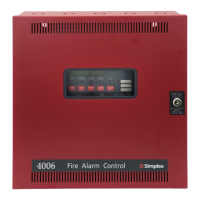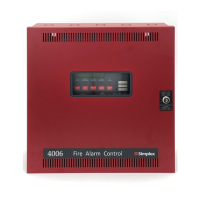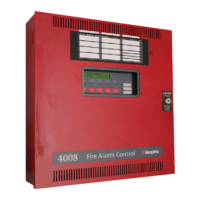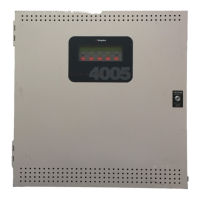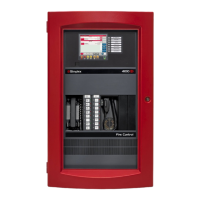G-1
Appendix G
Earth Fault Diagnostics
Overview This appendix contains instructions on how to use the Earth Fault Search feature of the
4100ES diagnostics menus. The minimum Earth Fault detection level for the 4100ES is 10k
ohms for all circuits.
Earth Fault Search is a diagnostic search of external field wiring that assists in locating circuits
with earth faults. An earth fault occurs when an electrical circuit is shorted to ground.
Although most circuits operate with a single earth fault, multiple earth faults can disable
communications. Because of this, earth faults must be located and repaired.
Earth Fault Search is conducted by the FACP. The diagnostic may be activated using either the
front panel interface or the Computer Port Protocol (CPP), using a service port.
The 4100ES supports two types of Earth Fault Searches:
• Location Search. Searches all circuits at a location, such as a transponder or the main
panel. For the purposes of Earth Fault Searching,
- A location is composed of a group of slaves connected to each other via 4100 Comm
(local RUI).
- The main panel is defined as all slaves local to the Master CPU.
- A transponder denotes all slaves associated with a single Transponder Interface Card
(TIC)/Local Mode TIC slave.
• IDNet Channel Search. Selectively enables channel isolators and repeaters to detect
which segment of the channel wiring has a fault.
- Earth faults are detected by one of the following:
- A single designated power supply at a location. The power supply that detects the fault
is designated via a jumper setting on the power supply slave. For any given location,
only one power supply should detect earth faults.
- Each 4009 IDNet NAC Extender on an IDNet channel.
In this chapter This chapter covers the following topics:
Topic Page
General Guidelines G-2
Earth Fault Searching from the Front Panel G-3
Search Results G-6
Earth Fault Search Example G-8
